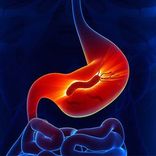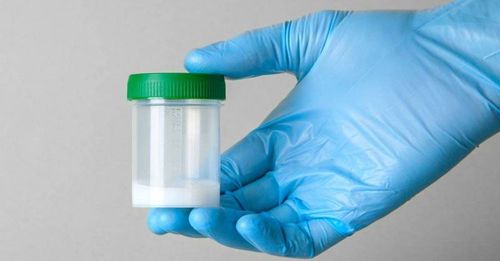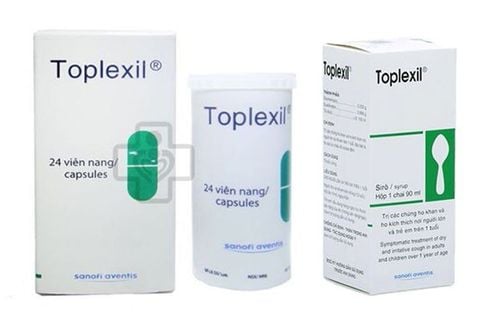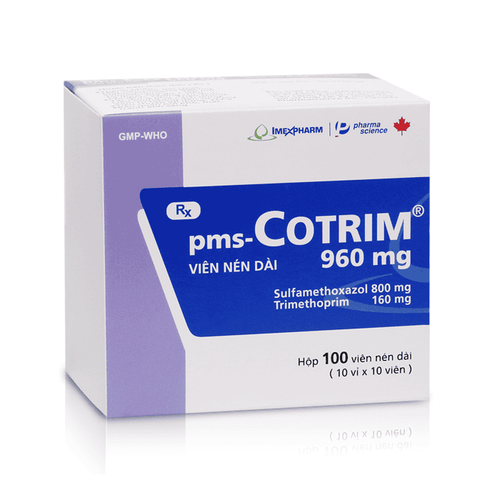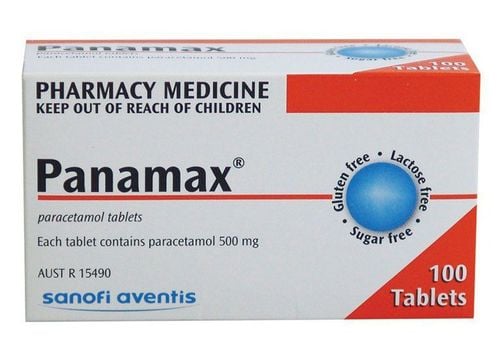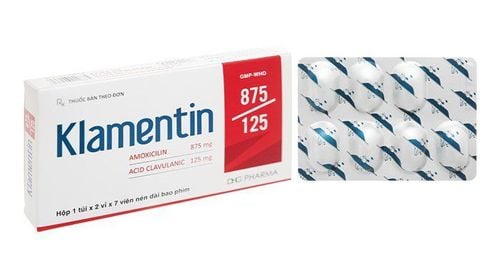Cravit Tab is formulated in tablet form with 2 strengths of 250 and 500mg. The drug's main ingredient is Levofloxacin, which specializes in treating mild - moderate - severe infections.
1. What is Cravit Tab 500?
Cravit Tab 500's main ingredient is Levofloxacin 500mg. This active ingredient is indicated for the treatment of bacterial infections caused by strains susceptible to Levofloxacin. Specifically:
- Acute sinusitis;
- Acute exacerbation of chronic bronchitis; Community-acquired pneumonia;
- Complicated and uncomplicated urinary tract infections;
- Acute nephritis, pyelonephritis; • Skin and soft tissue infections.
2. Instructions for using Cravit Tab
Cravit Tab 500 is specifically used to treat mild, moderate & severe infections in adults over 18 years of age. The recommended dosage is as follows:
- Treatment of acute sinusitis: Take 500mg/day, for 10-14 days;
- Treatment of acute exacerbations of chronic bronchitis: Take 250-500mg/day; for 7-10 days;
- Treatment of community-acquired pneumonia: Take 500mg x 1-2 times/day; for 7-14 days;
- Treatment of complicated or uncomplicated urinary tract infections: Take 250mg/day; for 7-10 days;
- Treatment of skin & soft tissue infections: Take 500mg x 1-2 times/day; for 7-14 days.
Note:
- For patients with hepatic failure and the elderly, no dose adjustment is required (unless consideration of renal function is necessary);
- Patients with renal impairment (creatinine clearance < 50mL/min): Consider dose reduction as advised by the doctor;
- Cravit Tab is not affected by food, so it can be taken regardless of meals;
- Patients taking Cravit Tab tablets need to drink plenty of water to prevent the formation of concentrated urine. Crystalluria and cylindruria have been reported with Quinolone use.
3. Side Effects of Cravit Tab
During the treatment of infections with Cravit Tab, users may experience the following problems:
- Possible side effects: Nausea, vomiting, taste changes, diarrhea, sleep disturbances (insomnia), dizziness, headache;
- Rare side effects: Joint/muscle/tendon pain/swelling; abdominal pain, vision changes, allergic reactions, sensitivity to sunlight;
- Very rare reactions: Mental disorders, seizures, heart arrhythmia, chest pain, anxiety/restlessness, urine changes, yellow eyes, yellow skin, signs of superinfection with prolonged use.
4. Precautions When Using Cravit Tab
Cravit Tab is contraindicated in the following cases:
- Hypersensitivity to any component of the drug (especially Levofloxacin, Ofloxacin), or other drugs in the Quinolone class;
- Children and adolescents (<18 years old);
- Pregnant and breastfeeding women;
- Patients with epilepsy;
- People with a history of tendon disorders (pain) caused by Fluoroquinolone antibiotics.
Cravit Tab should be used with caution in the following cases:
- Patients with impaired renal function;
- Those with or suspected of having neurological disorders that could trigger seizures;
- Diabetic patients using combined hypoglycemic agents (especially Insulin or Sulfonylureas);
- People with severe heart conditions such as arrhythmias, ischemic heart disease (which may involve QT prolongation), patients with uncontrolled electrolyte imbalances (such as hypomagnesemia, hypokalemia), patients taking class IA and III antiarrhythmic drugs;
- Patients with myasthenia gravis
5. Interactions of Cravit Tab
Cravit Tab can interact with the following medications:
- Antacids contain magnesium, aluminum, sucralfate, iron, and multivitamins with zinc. Therefore, Cravit Tab should be taken 2 hours before these medications;
Theophylline: Close monitoring of Theophylline levels is required, and the Cravit Tab dose should be adjusted to avoid unwanted side effects due to increased Theophylline levels in the plasma; - Non-Steroidal Anti-Inflammatory Drugs (NSAIDs): The Levofloxacin component in Cravit Tab combined with NSAIDs can increase the risk of central nervous system stimulation and seizures;
- Antidiabetic drugs: Patients combining Quinolones with antidiabetic drugs may have an increased risk of glucose metabolism disorders (hyper/hypoglycemia). Careful monitoring of blood glucose levels is necessary when using these two types of drugs together;
- Anticoagulants (Warfarin): combine with Cravit Tab may increase Warfarin's hepatic metabolism inhibition, thus prolonging Prothrombin time (a measure of blood clotting);
- Class IA antiarrhythmic drugs (such as Procainamide Hydrochloride or Quinidine Sulfate) and class III antiarrhythmic drugs (such as Sotalol hydrochloride and Amiodarone Hydrochloride): If used in combination with Cravit Tab, they can cause QT prolongation (a heart rhythm abnormality);
- Didanosine: Didanosine can reduce the absorption of Levofloxacin. Therefore, Cravit Tab should be taken at least 2 hours before or after taking Didanosine;
- Antidepressants: Levofloxacin used in combination with the drug Imipramine can increase the effect of QT prolongation.
To be safer for your health and for better treatment outcomes, in addition to consulting the information above, patients should also actively seek advice from doctors and pharmacists before using Cravit Tab.
To arrange an appointment, please call HOTLINE or make your reservation directly HERE. You may also download the MyVinmec app to schedule appointments faster and manage your reservations more conveniently.

